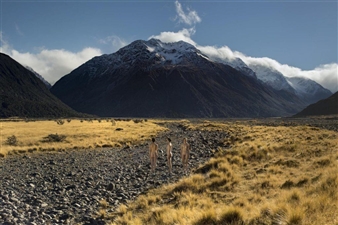PRESS & PUBLICATIONS
Nordic Delights discusses the concept of the region as a topography in its own right, as well as each country’s different art scenes from the 1990s onwards.
Read More
Sasha Huber (b.1975 Zurich, Switzerland) is a visual artist of Swiss-Haitian heritage. She lives and works in Helsinki (Finland). Huber's work is primarily concerned with the politics of memory and belonging, particularly in relation to colonial residue left in the environment. Sensitive to the subtle threads connecting history and the present, she uses and responds to archival material within a layered creative practice that encompasses video, photography, collaborations with researchers, and performance-based interventions. She has also discovered the compressed-air staple gun as a tool capable of producing visually arresting works that also functions like a symbolic weapon, offering the potential to renegotiate unequal power dynamics.
Alongside her solo practice, Huber has edited the book Rentyhorn (2010), and was co-editor of (T)races of Louis Agassiz: Photography, Body and Science, Yesterday and Today (2010) on the occasion of the 29th Biennale of São Paulo (Brazil). She has participated in numerous international exhibitions, including the 56th la Biennale di Venezia in 2015, and the 19th Biennale of Sydney in 2014. She holds an MA from the University of Art and Design Helsinki, and is currently undertaking doctoral research on racism through the lens of art at the Department of Art at Aalto University, Helsinki (Finland). Huber also works in a creative partnership with artist Petri Saarikko (founder and director, Kallio Kunsthalle, Helsinki), and together they have been invited to artist residencies in Brazil, Sweden, Norway, Switzerland, New Zealand and Australia. In 2010 they began working on Remedies, a project exploring aural knowledge of traditional folk remedies passed down through families around the world. They staged performances and created videos for Huskurer Remedies (2010-11) in Sweden, and have continued connecting communities with further versions in New Zealand, Australia and, this year, in Haiti. Accompanying project booklets were published by Labyrinth Press in Sweden (Swedish and English), and by Enjoy Public Art Gallery in New Zealand (Maori and English).
For additional information about this artist, visit Mutual Art


